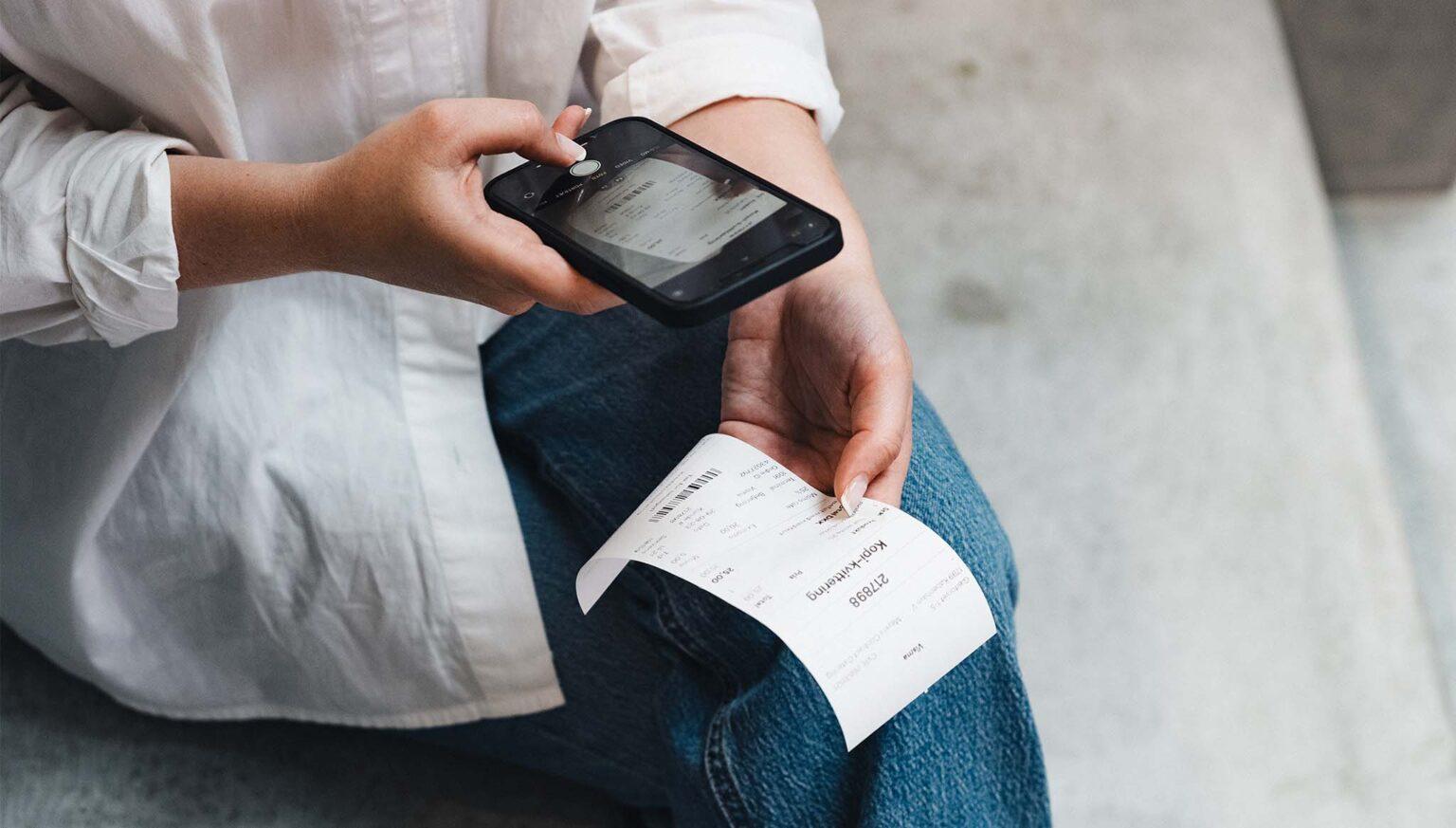Most businesses have – fully or partly – digitized and automated the process related to the expenses that are created by employees when they’re doing their jobs. The kind of expenses that are necessary in order to complete different types of work-related tasks.
They account for a fair share of the operating costs and can be everything from small purchases, expenses for software subscriptions and consultancy services to representation, travel expenses etc.
Even though several businesses already have jumped aboard digital solutions to help them optimize within this area, there’re still those who’re lagging and working manually. This doesn’t work when the year is 2025.
In addition, it’s a fact that a number of the businesses that already are digital within this area, in reality only operates with a partly digital and automated process. This also doesn’t work in 2025.
We’ll provide a few inputs to how it’s done the right way and what the advantages are.
All purchase, payment and transaction methods must be supported
Employee-created expenses occur all the time and spread across many different types of purchases. In addition, it’s very different how they’re paid and settled for.
Some purchases happen as per a classic invoice, in other purchases, the employees do outlays out of their own pockets, and then some purchases are paid for with company cards.
Obviously, the method used depends on the options provided by the supplier/merchant as well as the rules and policies of the company plays a role. For example, does the company provide company cards for their employees or not?
In order to obtain a 360-degree digitization of this area, companies needs to be aware that all feasible purchase, payment and transaction channels can be managed in a digital workflow, that runs from purchase to bookkeeping and accounting.
Also remember, that even though all employees might have company cards, there can be situations where this payment instrument isn’t usable. In those cases, it’s important to be able to handle an alternative payment method – otherwise the process will end up being only partly digital.
Mobility equals flexibility
It’s a hassle to fill in an Excel-sheet on a smartphone. Period!
The traditional business traveler is online and requires access to smart mobile platforms, where administrative tasks can be handled.
Excel-sheets don’t fulfill the requirement of being effective independent of time and location. In short, we’re seeing more and more requirements to the capabilities of mobile platforms.
By the way, nowadays it’s also not just the business traveler who’s mobile and works from multiple locations. As a consequence of the global pandemic in recent years, other types of employees are to an increased extent working from home and thus physically detached from their traditional workspace.
That’s why it no longer works, if employees are used to offloading receipts on the bookkeeper’s desk. Expenses, outlays and travel expenses must therefore be able to be handled from everywhere – digitally and automatically.
It’s also a hassle to send e-mails back and forth with invoices that need to be approved and paid. Alright, these documents aren’t paper based, but that in itself, doesn’t make the process digital, automated, or flexible.
Automation must be the norm
In short, a manual process roughly goes about like this:
1. The employee is responsible for registering, storing, and distributing receipts and expense documentation to approvers and the finance department.
2. Approvers will review the expenses and pass them on to the finance department, who’ll eventually control and validate the expenses while also initiate a process around typing and enter the expense data into the accounts so that bookkeeping can be done in the finance system.
3. After this, bills and receipts are kept for documentation purposes.
On the other hand, we’ve got the automated process:
1. The employee is using a mobile app to document the expense
- An image of the paper-based receipt is captured with the smartphone camera and data is automatically read.
- If we’re talking invoices, these are automatically scanned and prepared for further processing.
- If company cards are used, the transaction data from these are automatically fetched and coupled to the correct receipt.
2. The employee then documents the expenses digitally and sends them into a digital workflow that also reaches approver and finance department.
3. The manager approves the expense via smartphone and the finance department will receive expense data that’s ready for bookkeeping.
The automated process also provides the option to configure various automatic controls and validations of the expenses.
Automation will repay with a significantly lower error rates and a much speedier process time. In many cases can businesses save up to 80 percent in administration time.
We want precision – manual processes equal a high error rate
Manual data entry increases the risk for failures.
It’ll become even more complicated when multiple people are involved.
When an employee makes a purchase, the individual will get a receipt. After this, the employee needs to record (by typing) the data from the receipt, for example in a spreadsheet which then might need to be printed, so that the receipt can be attached. If the finance department discover an error, they’ll need to spend time on clarification and correcting the error, but there’s also the risk, that the error simply isn’t caught.
Take a purchase made with a company card:
In an automated process, transaction data from the card is automatically fetched, structured, and matched with an image of the receipts. After this, they’re categorized (for example as meals and drinks, taxi, train, parking etc.). Control of expenses according to company policies and legislation (for example tax rules) are built into an automated solution, so accuracy and transparency are secured.
The point is, that data from each single transaction are picked up as soon as it occurs, and you’re provided with more precise data for your bookkeeping.
Realtime data is important and secures the process
A large share of a given business’ costs are of the type that we initially described and approximately ten percent of a business’ operating costs are related to travel and representation – so it makes sense to have control of the process related to the costs.
But a manual process, where employees collect receipts over time and submit for approval and bookkeeping in batches, either physically or via e-mail, can quickly give ugly surprises. It’s slow and it’ll delay the bookkeeping resulting in an inaccurate overview of costs.
Through automated expense management, businesses will operate with updated data and get a whole different foundation for running their business.
Do you want to know more?
At Acubiz, we can help you with the digitization of your company’s expense management and integration with your company card and financial system. Learn more about what software integrations are here, or read more about the integrations options with Acubiz.
Contact us if you want to know how we can help your business or book a free online demo to learn more.

